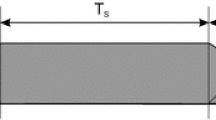Abstract
Wireless data products and services being proposed today include exotic mixes of services and technologies: packet transport over cellular circuits, facsimile service over Cellular Digital Packet Data (CDPD), voice and video over wireless LANs, and everything in between. Data networking terms that seem to have a clear meaning-data-link, network and transport layers; circuit-mode and datagram; connection-less and connection-oriented-in fact have meaning only in context. Thus TCP, a reliable packet transport protocol, is being used in CDMA circuit-mode data to provide a reliable data-link layer for the error-prone wireless link. IP datagrams will be transported over cellular links using dedicated channels with call establishment, possibly per packet. Market demands for timely solutions, competition between alternative technologies and the plethora of alternative fora for standards development are driving wireless data into fragmented directions. The primary constraints come from the limited spectrum, the need for security in the presence of mobility and the size and weight of mobile terminals and devices. Often the optimization for the latter constraints is sacrificed at the altar of the former drivers. Based upon our experience and work with standards and systems we attempt to put wircless data into perspective. We compare and contrast major services and products and identify the choices that were made and why.
Similar content being viewed by others
References
IEEE 802.11,Wireless LAN Medium Access Control (MAC) and Physical Layer (PHY) Specifications, Institute of Electrical and Electronics Engineers, Inc. (November 1993), draft standard.
B.R. Badrinath, A. Bakre, T. Imielinski and R. Marnatz, Handling mobile clients: A case for indirect interaction,Fourth Workshop on Workstation Operating Systems (1993). See also ftp://paul.rutgers.edu/pub/badri/itcp-tr314.ps.Z.
R.T. Braden, Requirements for Internet hosts-communication layers, RFC 1122 (October 1989).
K. Budka, Cellular digital packet data: Channel availability,Proc. PIMRC '95.
R. Caceres and L. Iftode, Improving the performance of reliable transport protocols in mobile computing environments, IEEE J. Select. Areas Commun. (1995), Special Issue on Mobile Computing Networks.
CDPD, P.O. Box 97060, Kirkland, WA 98083, USA, Cellular Digital Packet Data System Specification: Release 1.0 (July 19, 1993) Vols. 1–5.
M.C. Chuah, S. Nanda and B.T. Doshi, Performance comparisons of two CDMA radio link protocols, in preparation (1995).
Special Report on Wireless Data, Data Communications, 21 March 1995 (McGraw-Hill, 1995).
A. DeSimone, M.C. Chuah and O.-C. Yue, Throughput performance of transport-layer protocols over wireless LANs,Proc. IEEE Global Telecommunications Conference-Globecom '93 (1993) pp. 542–549.
B.T. Doshi, R.P. Ejzak and S. Nanda, Radio link protocols for cellular data,Fifth WINLAB Workshop (1995), papers to be published by Kluwer Academic Publishers.
B.T. Doshi, R.P. Ejzak and S. Nanda, Working papers, CDMA Development Group (1994).
S. Floyd, TCP and explicit congestion notification, Comp. Commun. Rev. 24 (1995) 8–23.
J.M. Jacobsmeyer, Capacity of channel hopping channel stream on cellular digital packet data (CDPD),Fifth Virginia Tech Symposium on Wireless Personal Communications (1995).
Van Jacobson, Congestion avoidance and control, in:Communications, Architectures & Protocols, ACM SIGCOMM (August 1988) pp. 314–329.
J. Jayapalan and M. Burke, Cellular data services architecture and signaling. IEEE Personal Commun. Mag. 1(2) (1994) 44–55.
D.B. Johnson, Scalable support for transparent mobile host internetworking,Ninth Annual IEEE Workshop on Computer Communications (1994), Wireless Networks, this issue.
P. Karn,The Qualcomm CDMA Digital Cellular System, ftp://ftp.qualcomm.com/pub/cdma.
M. Khan and J. Kilpatrick, Mobitex and mobile data standards, IEEE Commun. Mag. (March 1995) pp. 96–101.
Y.-B. Lin and S.K. DeVries, PCS network signaling using SS7, IEEE Personal Commun. Mag. (July 1995).
P. Manzoni, D. Ghosal and G. Serazzi, Impact of mobility on TCP/IP: An integrated performance study, IEEE J. Select. Areas Commun. (1995), Special Issue on Mobile Computing Networks.
J. Mason, Pork bellies and spread spectrum, Commun.: The Magazine of Mobile Radio Professionals (1993).
S. Mohan and R. Jain, Two user location strategies for personal communications services, IEEE Personal Commun. 1(1) (1994) 42–50.
S. Nanda, B.T. Doshi and R.P. Ejzak, A retransmission scheme for circuit mode data on wireless links, IEEE J. Select. Areas Commun. JSAC-12 (1994) 1338–1352.
D. Newman and K. Tolly, Wireless LANs: How far? how fast? Data Commun. (21 March 1995) 77–87.
C. Perkins,IP Mobility Support, Internet Engineering Task Force (21 March 1995), Internet Draft (work in progress). See also the material at ftp://software.watson.ibm.com/pub/mobile-ip/mobile-ip.html
C.E. Perkins and K. Luo, Using DHCP with computers that move.Ninth Annual IEEE Workshop on Computer Communications (1994), Wireless Networks 1 (1995) 341–353.
J.B. Postel, Transmission control protocol, RFC 793 (September 1981).
M. Schwartz,Telecommunications Networks: Protocols, Modeling and Analysis, Addison-Wesley Series in Electrical and Computer Engineering (Addison-Wesley, 1987).
R. Stevens,TCP/IP Illustrated (Addison-Wesley, 1994).
Telecommunications Industry Association,Cellular Radio-Telecommunications Intersystem Operations, IS-41.
Telecommunications Industry Association,Cellular System Dual-Mode Mobile Station-Base Station: Digital Control Channel (to be published as IS-136.1), Draft (November 1994).
Telecommunications Industry Association,Data Services Option Standard for Wideband Spread Spectrum Digital Cellular System, IS-99, V&V Draft (September 1994).
Telecommunications Industry Association,TDMA Radio Interface: Radio Link Protocol 1, V&V Draft (August 1994).
O.-C. Yue, M.C. Chuah and A. DeSimone, A performance characterization of the IEEE 802.11 MAC, work in progress.
Author information
Authors and Affiliations
Additional information
We acknowledge the contributions of our colleagues at AT&T Bell Laboratories: Ken Budka, Mooi Choo Chuah, Bharat Doshi, Subra Dravida, Richard Ejzak and On-Ching Yue.
Rights and permissions
About this article
Cite this article
DeSimone, A., Nanda, S. Wireless data: Systems, standards, services. Wireless Netw 1, 241–253 (1995). https://doi.org/10.1007/BF01200844
Issue Date:
DOI: https://doi.org/10.1007/BF01200844




